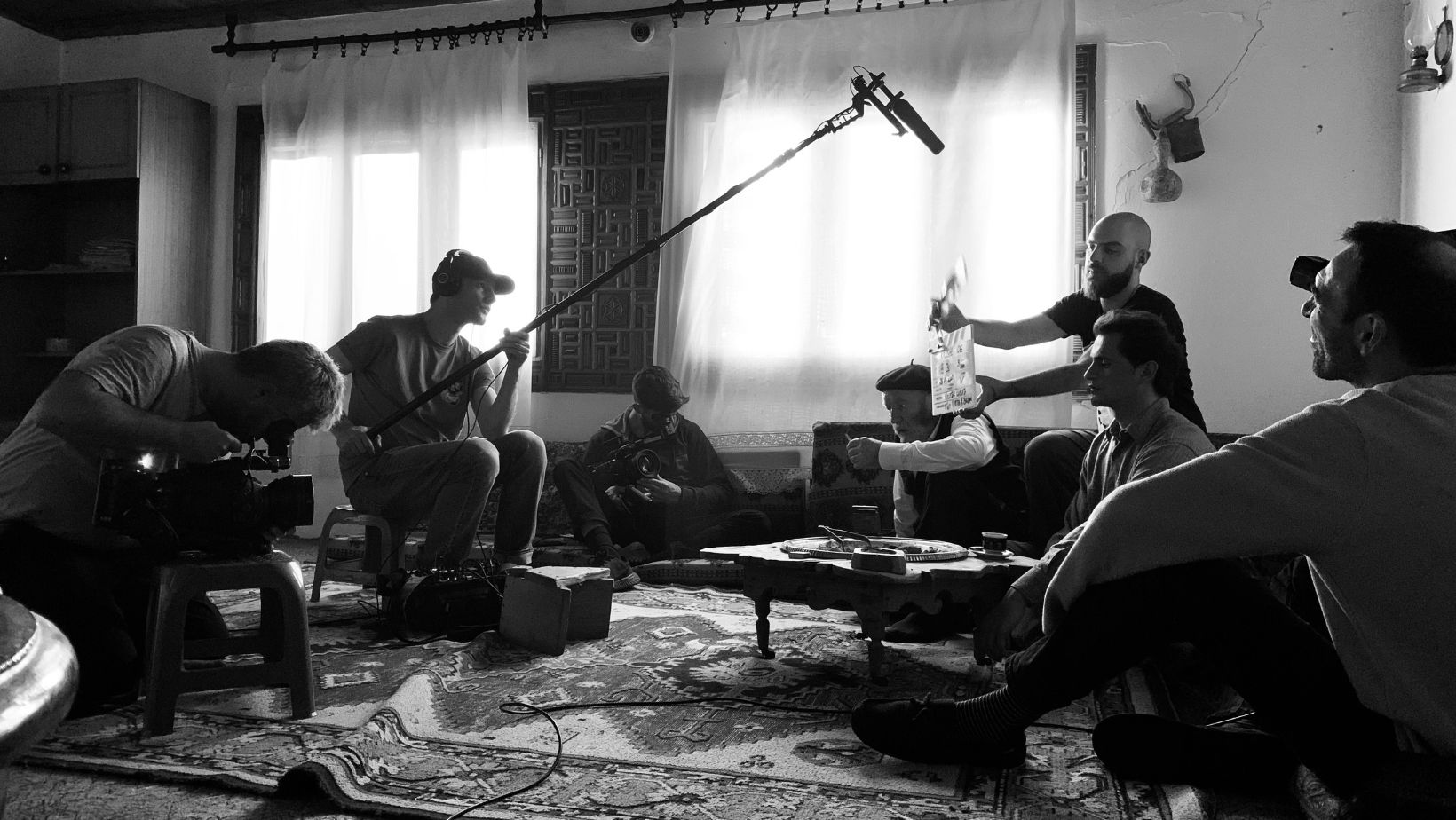Are you interested in learning about the current trends in the screenwriting field?
Screenwriting undergoes a significant transformation as society advances further into the digital era. Screenwriters encounter thrilling possibilities alongside distinctive difficulties due to emerging platforms and shifts in audience tastes together with industry demographic changes.
Looking Ahead:
- Understanding Today’s Screenwriting Landscape
- Key Industry Demographics and Success Rates
- Digital Tools Revolutionizing the Craft
- Breaking Into the Industry
- Future Trends and Opportunities
Understanding Today’s Screenwriting Landscape
Today’s screenwriting industry has experienced major changes throughout recent years. Screenwriting statistics from Pzaz reveal that in the United States, screenwriters experience success rates from 5% to 20% while only 1-2% manage to earn their entire income through their screenwriting work. The statistics appear intimidating yet they represent only a fraction of the entire picture.
The changing landscape of screenwriting authorship deserves special attention. The screenwriting industry has made significant strides toward diversity as female screenwriters now make up 53.4% compared to 46.6% of male screenwriters. The changing demographics of screenwriters are transforming storytelling perspectives while introducing new voices to viewers.
Key Industry Demographics and Success Rates
Screenwriting talent demonstrates unique distribution patterns based on geographic locations. Screenwriters in the United States Pacific region account for the largest percentage of professionals at 23.8%. Hollywood’s longstanding history and enduring impact in the area make this concentration logical.
When it comes to earnings, the landscape is varied:
A little more than half of screenwriters make less than the industry average annual salary of $97,670. 43.7% make between $40,000 and $80,000 annually, the rest of the screenwriters’ salary distribution reaches into higher income brackets.
Screenwriters show deep dedication to their work because 62.2% describe themselves as professionals even though their pay varies.
Digital Tools Revolutionizing the Craft
The digital revolution has transformed screenwriting practices in addition to altering our content consumption habits. A dominant 70.5% of screenwriters have adopted Scrivener for their writing work which reveals technological tools as essential components of modern creative writing.
Modern screenwriting tools offer features that would have seemed like science fiction just a decade ago:
- Real-time collaboration capabilities
- Advanced formatting automation
- Integrated research management
- Cloud-based backup and synchronization
- Script analysis and feedback tools
The technological innovations in screenwriting now allow anyone interested in writing to access this craft without needing specific training locations or formal education.
Breaking Into the Industry
The journey toward screenwriting success has undergone substantial change throughout recent years. Digital platforms have opened up fresh opportunities for new talent even though traditional pathways through film school and industry connections remain available.
Today’s screenwriters are finding success through various channels:
- Online screenwriting competitions
- Digital networking platforms
- Virtual pitch sessions
- Independent production companies
- Streaming service original content divisions
Most screenwriters show a strong dedication to plot twists since 60.2% of them incorporate this element into their writing structures. Audiences today desire intricate and captivating stories that maintain their interest throughout multiple episodes or across different media platforms.
Future Trends and Opportunities
As the industry adapts to new market demands 33.8% of screenwriters now concentrate their efforts on writing television scripts. The increasing popularity of episodic content arises from the expansion of streaming services and evolving audience preferences.
Emerging opportunities include:

- Short-form content for digital platforms
- Interactive storytelling formats
- Cross-platform narrative experiences
- International co-productions
- Adaptation of digital content
The Impact of Streaming on Screenwriting
Streaming platforms have revolutionized both storytelling techniques and audience consumption habits. This shift has created new demands and opportunities for screenwriters who must now consider:
The way binge-watching affects how stories are paced
- Platform-specific content requirements
- Multi-season story arcs from the outset
- International audience considerations
- Diverse format requirements
New viewing habits necessitate the adaptation of the conventional three-act structure. Screenwriters need to develop storylines that engage viewers over many episodes while preserving strong narrative control to maintain audience engagement.
Collaborative Writing in the Digital Age
The screenwriting process now involves a collaborative approach where writers’ rooms function online through various time zones. This new dynamic requires:
- Strong digital communication skills
- Familiarity with collaborative writing tools
- Ability to work asynchronously
- Cultural awareness for international productions
- Adaptability to different writing styles
The old stereotype of writers working alone has been replaced by a contemporary team-based model that mirrors the worldwide essence of current content production.
Education and Skill Development
The journey to screenwriting success undergoes ongoing transformation. While formal education remains valuable, many writers are now taking advantage of:
- Online courses and workshops
- Virtual mentorship programs
- Industry webinars
- Professional networking platforms
- Digital portfolio development
The availability of democratized educational resources allows talented writers to enter the field who otherwise would not have had access to traditional training routes.
Screenwriters need to focus on social media engagement and personal brand development to advance their careers.
Modern screenwriters must expand their focus beyond scriptwriting in today’s digital world. Career advancement demands that writers establish a strong personal brand along with an active online presence. Successful screenwriters are now:
- Maintaining active social media profiles
- Creating valuable content about their craft
- Building engaged online communities
- Sharing industry insights and experiences
- Networking digitally with industry professionals
An online presence serves as a tool for writers to maintain industry connections and facilitates opportunities for representation and new projects.
Adapting to Market Demands
Screenwriting success requires writers to understand and adapt to current market demands. Today’s writers must be able to:
- Research and analyze market trends
- Identify emerging content opportunities
- Adapt writing styles for different platforms
- Balance artistic vision with commercial viability
- Create content for diverse global audiences
The combination of market awareness with creative talent greatly improves a writer’s likelihood of succeeding in the industry.
Diversity and Representation
A movement towards more diverse storytelling has opened new chances for screenwriters while also assigning them additional obligations. The industry is actively seeking:
- Authentic voices from underrepresented communities
- Stories that reflect diverse experiences
- Cross-cultural narratives
- Fresh perspectives on universal themes
- Inclusive character representations
The emphasis on diversity extends beyond industry requirements since it enhances storytelling with varied perspectives that connect with audiences worldwide.
Technology and the Creative Process
Screenwriters now have access to new opportunities thanks to the combination of artificial intelligence with sophisticated writing applications. These technologies are reshaping how writers approach their craft:
- Story analysis software powered by AI detects problems with story pacing
- Character development software monitors story arcs and maintains relationship dynamics.
- Automated script formatting and revision tracking
- Virtual reality tools for visualizing scenes
- Predictive analytics for audience engagement
These tools are designed to improve creative output without serving as replacements for human imagination. Top writers leverage technology to handle technical tasks so they can concentrate on developing creative stories.
Building Industry Relationships
Although screenwriting has undergone digital transformation personal connections still play a vital role in achieving success. Modern writers are finding innovative ways to build and maintain professional connections:
- Virtual pitch festivals and screenwriting conferences
- Online mentorship programs with established writers
- Industry-specific social networking platforms
- Digital writers’ rooms and collaboration spaces
- Professional development communities
Through these relationships writers discover opportunities that remain hidden from traditional networking methods. Success in today’s competitive landscape belongs to writers who blend their networking expertise with strong writing capabilities.
Remember, while the tools and methods of screenwriting continue to evolve, the fundamental goal remains unchanged: The primary objective of screenwriting persists as the creation of engaging stories that connect with audiences despite continuous advancements in tools and methods. Successful writers will master new technological tools and opportunities while maintaining the essential principles of captivating storytelling.
A Final Word: The Future of Screenwriting
Moving forward, screenwriting continues to transform itself at a speed never before seen. Success in this dynamic environment requires:
- Adaptability to new technologies and platforms
- Continuous skill development and learning
- Strong networking abilities, both online and offline
- Understanding of global markets and audiences
- Commitment to authentic, compelling storytelling
Successful writers in the future will be those who adopt new industry changes yet preserve the essential storytelling components that consistently win audience admiration.


